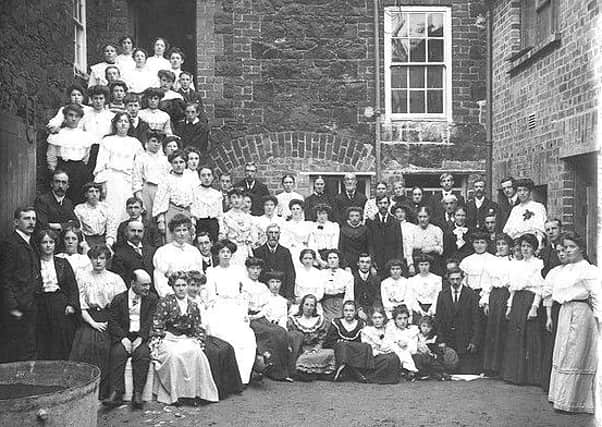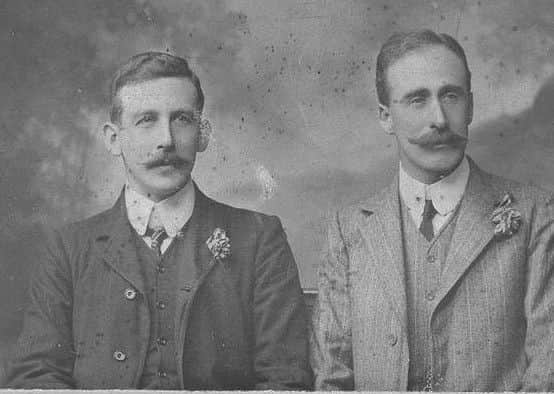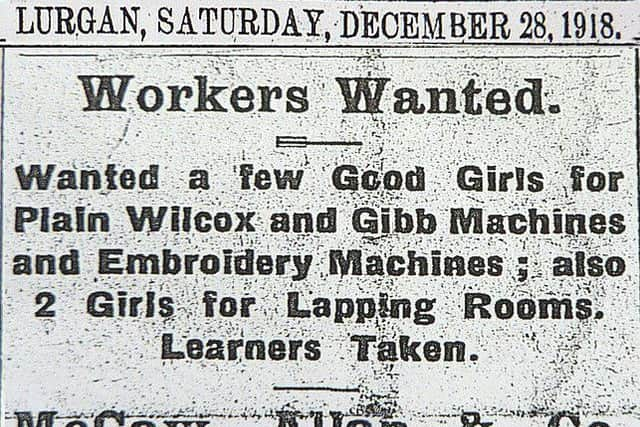Linen industry is on a par with Game of Thrones, Giant's Causeway and the Titanic


The email came from the organisation that tirelessly champions “the Northern Ireland experience” – and regular readers of this page may remember my subsequent account of Mr Davenport’s visit.
With more than 20 years in the business, Fionn is a highly acclaimed travel writer and broadcaster.
Advertisement
Hide AdAdvertisement
Hide AdHe nominated Belfast and the Causeway Coast for Lonely Planet’s Best in Travel 2018 award, which we won, against massive international competition.


Fionn’s appointment to speak at Tourism NI’s ‘Journey of Rediscovery’ in celebration of the award, coincided with Storm Fionn’s UK-wide gales and blizzards.
His attendance at the event was severely jeopardised but he braved his turbulent namesake to give an enormously inspiring talk.
“One of the things that Northern Ireland has is authenticity,” said Fionn, “it’s real,” he stressed, adding “you can come and learn about it, come and witness it, come and photograph it.”
Advertisement
Hide AdAdvertisement
Hide AdHe posed the most important question that can be asked about any destination – “Does it meet or exceed expectations?”


He answered his own question – “Northern Ireland exceeds expectations.”
His answer thoroughly supported Tourism NI’s call for everyone to put Northern Ireland at the top of their short-break “bucket list” this year.
Whilst extolling our best-known visitor attractions Fionn said that there’s much more here than the legacy of the Titanic, Game of Thrones and the Giant’s Causeway.
Advertisement
Hide AdAdvertisement
Hide AdOne of the few benefits of the snow and gales that came with Storm Fionn, and with the more recent visit by Storm Emma and the “beast from the east”, is that people tend not to complain too much about rain!


Yet our most ubiquitous grumble was one our greatest assets.
Rain may put some folk off holidaying at home – at a great loss to themselves - yet it has had a hugely significant role in Tourism NI’s award-winning ‘Northern Ireland experience’.
The linen industry that brought us successfully into the 20th century, when Belfast was the linen capital of the world, depended on rain!
Advertisement
Hide AdAdvertisement
Hide AdLinen is made from the fibre of the flax plant, which flourishes in wet bog-land and needs rain.


Processing the flax, spinning the yarn and weaving the cloth relies on humidity, which needs rain!
The washing and dying of the yarn is greatly enhanced by the distinctive softness of our local water supply – which comes from rain!
So popular tourist attractions like the Irish Linen Centre at Lisburn Museum, the linen collection at the Ulster Museum, and the local linen industry itself, past and present, have all been nurtured by rain.
Advertisement
Hide AdAdvertisement
Hide AdAnd whilst Belfast was known internationally as ‘Linenopolis’ due to its massive production of linen, Co Armagh also played a significant part in the industry, particularly weaving.
This is being celebrated in an admission-free exhibition opening tonight in Portadown’s Carlton Street Heritage Centre (the Orange Hall), in association with Craigavon Museum Services and Portadown Heritage Tours.
The exhibition charts over three centuries of linen manufacturing in North Armagh, from its 17th century beginnings as a cottage industry through to its industrialisation in the 19th century.


Industrial expansion brought mighty mills and huge factories dominating the skylines of Portadown and Lurgan, while the industrial contraction of the latter 20th century ended linen’s historic escalation.
Advertisement
Hide AdAdvertisement
Hide AdThere’ll be a wide range of artefacts, documents, photographs and samples of products in the exhibition, along with oral history interviews.
Among the many famous companies referenced in the display are McCaw Allan, Spence Bryson, C Blane and Sons, Johnston and Allen, and Achesons.
The exhibition opens tonight from 7pm to 9pm, with further opening times tomorrow and Friday from 2pm to 4pm and 7pm to 9pm.
It will then continue till 17th March with opening times listed at www.portadownheritagetours.co.uk and there’ll also be a talk by David Weir of Craigavon Museum Services about the local linen industry next Monday 12th March at 7pm.
Advertisement
Hide AdAdvertisement
Hide AdWhen Belfast was known as ‘Linenopolis’, Lurgan and Portadown’s mills were hailed worldwide for the excellence of their linen products, particularly for handkerchief linens, generally termed “the Cambric Trade”.
Their multiple other linen fabrics included damask, sheeting, aero-linen, drying cloths (or glass cloths), dress and suit linen, ruck towelling, embroidery linen, tailors’ interlining and countless cloths for industrial use.
The Carlton Street exhibition includes James Johnston’s and Joseph Allen’s partnership, formed in Lurgan in 1867 to manufacture linen and Cambric by handloom.
In 1888 D H Sinton of the farmer-Quaker entrepreneurial family purchased land adjacent to the railway station in Markethill and established a linen factory with 20 looms.
Advertisement
Hide AdAdvertisement
Hide AdThe partnership of Thomas Henry Spence and John Bell Bryson which started in 1884 purchased the Sinton factory in 1909.
McCaw Allan’s linen and handkerchief factory at Taghnevan, Lurgan, can be traced back a far as 1820 when the McCaw family rented 21 acres of land from Lord Lurgan.
McCaw Allan was awarded the Royal Warrant in 1998 as manufacturer of fine bed linens to Her Majesty Queen Elizabeth II, an honour the company still retains today.
Proud and unique industrial heritage, in an exhibition that opens tonight in Lurgan. Further details at www.portadownheritagetours.co.uk.